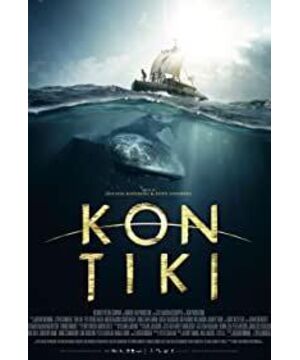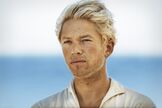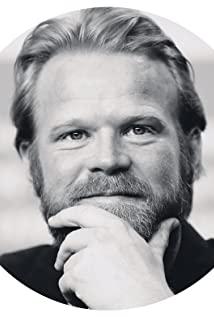Authenticity is the biggest highlight of the film "Lonely Raft". Thirty-eight minutes before the start of the film is the pre-submission of the story. Thor and his wife Liv are in Fatuiwa, and they live and study with the local aborigines, from ocean currents, cain pineapples, indigenous inhabitants (Dai), Tiki stone statues, etc. The details infer their own theory. But in Brooklyn, New York, his views could not be recognized, so he went around raising funds to find sailing partners. With the funding of the President of Peru, the materials and equipment were successfully raised. In the media focus, the crowds sent off, bravely and decisively boarded the "Kantiki" raft and set off toward the sunset.
The film is realistic about the lonely drifting of the raft in the voyage, the storm at sea, the chase of sharks, the seasickness of the crew, the failure of the radio connection to the signal, the falling of the crew, the encounter of luminous marine species at night, and the La Loa Atoll that rushes over the "blade of the sea". record. Lonely rafts, storms, luminous species under the sea, flying fish, these scenes are also portrayed in Ang Lee’s "Fantasy Drifting of the Youth Pie". The performance of "Fantasy Drifting of the Young Pie" is exaggerated and exciting, and the visual effects are very shocking. "Lone Raft Over the Oceans" appears to be very plain, without too many movie dazzling skills, but meticulously reproduce the history through the arrangement of the shots and the scheduling of the scenes.
The storm caused big waves at night, and the raft was swayed. The crew tied their bodies with ropes. When the canvas was removed, Thor, who couldn't swim, fell into the sea, and was pulled on the raft without any risk. When the huge whale passed under the raft, the terrified Herman (engineer, refrigerator salesman) ignored his teammates to stop him, threw the harpoon and stabbed the whale. The raft swayed instantly, Knut (veteran, radio expert) ) Was thrown into the sea. With everyone's help, Knut was saved safely and the whale escaped calmly.
There is a very magical experience. When the parrot Lolita fell into the sea and was eaten by a shark, angry Knut hugged the shark's tail with his bare hands, and Tostan (veteran, radio expert) used a hook to hook the shark back. The two easily carried the shark from the sea to the board of the boat. Tostein ignored Benter's (ethnologist) persuasion and slaughtered the sharks frantically. The blood attracted a group of bloodthirsty sharks.
If the conventional development should be a fierce human-shark fighting scene, the film is not about how fierce sharks are and how witty people overcome natural challenges. It focuses on the characters’ inner fears and doubts. Herman, who has always been worried about going on a lone raft in the ocean completely in accordance with the Tiki method, stumbled and fell into the sharks. The experienced Benter ordered the shark meat on the raft to be thrown into the sea. Knut bravely jumped into the sea and rescued Herman. . The audience was so nervous at first, their heart almost mentioned their throats. A group of sharks opened their mouths and surrounded two prey that fell in the sea, but the team members got rid of the sharks smoothly and were pulled on a raft. It is estimated that the audience is like a balloon. It's discouraged all of a sudden, a bit unpleasant. Perhaps we have watched more Hollywood blockbusters and imagined the protagonist so great and powerful. The more fierce the fighting scene, the more we can inspire our worship. But think about it seriously, maybe real sailing is indeed so thrilling, and sharks are not always fierce and brutal, so that it is possible to restore the natural environment more realistically, reduce people's fear of the ocean, and enhance the courage to explore and adventure.
The creative team of "Lonely Raft" has made many details in the film, emphasizing the sense of time in the drifting process. When they first set off, the five team members were all neatly dressed, and their facial beards were cleanly shaved; four days later when the radio-connected balloon flew away, their faces were covered with scum; when they met a shark, their beards were again It has grown a lot; when it finally floats to the Tropic of Capricorn, the beard becomes a ball of hair, which can not be stuck when drinking water, and the hair is also long. The players are like wild men. In addition, the canvas on which Tiki was painted was torn during the storm, and the canvases in the following scenes were all stitched up; the coconuts with the rafts grew small saplings when they arrived in Polynesia. These are all in line with the logic of time. . The marine species encountered when the raft floats on the sea are also in line with the geographic location of the navigation. First, flying fish, whales and sharks in the deep sea, and then seagulls and dolphins near the island. This arrangement is in line with the audience's psychological presupposition. It is easy to follow the protagonists into the unknown ocean day by day, feel the thrill of adventure, feel the unexpected discovery of adventure, feel the fear and uneasiness in the heart, and feel the unwavering faith in faith.
The artistry of the movie "Lonely Raft" is not easy and cannot be ignored by the audience. The snowy mountains and ice lakes under the wide-angle opening are very similar to the Rocky Mountains in "Wild Hunter"; the blue eyes of Thor looking directly into the camera are close-ups, which lasts for a few seconds, making everyone feel that this character is thoughtful and determined. Will and adventurous spirit not afraid of challenges. The credits also reinforced this point. When Thor arrived at his destination after all the hardships, he knelt on the beach, the water droplets from his hair slipped onto his beard, and his dark face was long again facing the camera. His gaze is relieved, momentary numbness, joyfulness, and excitement.
When the 6 crew members made the Bessels round raft and the Kandy base, the picture used a 4:3 frame. With the addition of black and white tonal processing, it seems to have a sense of historical memoriality. In response to this, the film also uses the same picture processing effect at the end to tell you the life experiences of the six adventurers and heroine Liv. The special effects of black and white old movies are to use artistic characteristics to enhance the authenticity of history. In fact, the processing of this artistic effect also emphasizes that Thor Heyerdahl used a camera to record this experience during his voyage. The film recorded this time will help him obtain outside support and funding.
When Thor told Liv that he could not go home to accompany the children on the Christmas call, the sound processing of the film was very interesting. Thor said that he could not go home without funds. The children’s conversation in the house "Dad will definitely come back." On my side••••••", Liv said, "The children want to see Dad too much." The interspersed voice dialogue processing strengthened and deepened the contradiction between Thor and Liv. Thor gave up reuniting with his wife and children in order to dream, and Liv gave up her beloved husband for the children. When the Kantici arrived in Polynesia, Thor read the letter Liv had written to him in advance, "You will spend the rest of your life chasing the sunset. This is you, Thor, whom I love so much. The place I love you most is also The reason for our separation." At this time, the camera set was followed by Thor holding a letter and looking at the sunset in the Atlantic Ocean. Liv was standing on the hillside in front of his house, looking back at the setting sun. The silence outside the painting is better than the sound, like the red sunset that is about to sink, the aftertaste extends infinitely!
Watching "Lone Raft Over the Ocean" will definitely be attracted by the beauty of the Atlantic Ocean, the dazzling starry sky, the blue sea, the sparkling fish, the huge whale, the little flying fish with wings, and of course the beach is even more beautiful. White clouds, lush coconut trees, cotton-white beaches, and crystal clear waters are as blue as the spiritual water in the fairy holy grail. Audiences who have watched "Youth Coral Island" will definitely not forget the beautiful big beach, and they want to swim under the sea. If they watch "Lone Raft", they will definitely want to lie down on the white sand and watch the sea quietly. So peaceful, so cozy, so satisfying!
A tribute to the former, exploring the future, sailing
"Lone Raft Over the Ocean" focuses on showing us 7 important characters, and also wittyly portrays two small animals, the parrot Lolita and the little crab. Thor took the parrot on the raft as a gift. The parrot accidentally bit the wire connecting the radio signal. The parrot fell into the sea unexpectedly and was buried in the mouth of the shark. The little crab from South America mysteriously joined the expedition raft, unswervingly sailed 5,000 kilometers with the team members, and finally returned to Polynesia, like an envoy sent by Tiki to guard his followers. Every time Thor sees a little crab, he strengthens his confidence, believing that Tiki drifted over with a raft, without any modern power engine, no wire to bind the log, and the raft would calculate along him. Drifting along the route, it will not blow to the coastline of South America, and will not fall into the maelstrom. The joining of these little elves undoubtedly added interest to the lonely travel, and strengthened the confidence to move forward for the doubtful adventurers.
I believe that when Captain Thor is shaken in his heart, what gives him the most power is the portrait of Tiki on the sail. From studying Tiki, believing in Tiki to following Tiki’s ocean drifting, he drew a colossus of Tiki on the sails before setting off, and named the raft "Kantiki"; when the sail was set sail, Tiki was His portrait led the raft forward against the sun; on stormy nights, the sails were cut; the repaired sails took them through the sharks, drifted to the Tropic of Capricorn, and rushed through La Roa Atoll; finally they became resting on the island Tarpaulin. Every adventurer persists along the way. The team members insist on following Thor’s dream. Thor insists on following his belief in Tiki. When encountering natural obstacles and encountering the doubts of his teammates, he can only live up to his trip by persisting. , Do not forget the original intention, reach the end!
Perhaps the original intention of the director for the film "Lone Raft" was to express his admiration for the scientist Thor Heyerdahl and to convey his unwavering spirit of adventure.
"Lone Raft Over the Oceans" not only re-drifts along the sailing route of the ancients, but also sorts out their own lives. This voyage changed the conclusion of elementary school students’ books that "the indigenous peoples of Polynesia are from Asia". This voyage changed the social sciences’ theoretical understanding of Norwegian explorer Thor Heyerdahl, confirming what he said "the ocean is not a human being." The obstacle is the road.” This ocean voyage changed the lives of the six crew members. Benter fell in love with Polynesia and settled here; Eric fell in love with sailing and lived on the ship for 11 years; Tostan fell in love with Knuth fell in love with this raft and founded the Kandy Museum; Herman became a fishery ambassador from selling refrigerators; Thor Heyerdahl wrote this book into a book, and published more than 70 A language to convey their adventurous and exploring spirit to the corners of the world.
Challenge authority, challenge nature, challenge yourself, have the courage to take risks, be determined to explore, not forget your original intention, open the course of life, and chase that beautiful sunset!
View more about Kon-Tiki reviews











